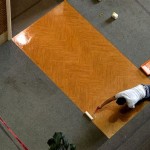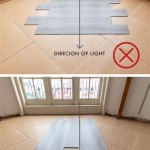Rustic Stone Flooring Ideas: Embracing Natural Beauty and Timeless Appeal
Rustic stone flooring offers a unique and enduring aesthetic, bringing the warmth and character of nature into interior and exterior spaces. Its inherent variations in color, texture, and pattern create an organic and inviting atmosphere, distinct from the uniformity of manufactured materials. Choosing rustic stone flooring involves understanding the diverse types of stone available, the design options they offer, and the necessary considerations for installation and maintenance.
The term "rustic" in this context refers to a style that emphasizes natural, aged, and slightly imperfect materials. It embraces the irregularities and imperfections that occur in nature, rather than striving for a polished or flawless appearance. Rustic stone flooring aims to replicate the look of stone that has been weathered and worn over time, creating a sense of history and authenticity. This makes it a popular choice for homes, patios, and outdoor spaces seeking a connection to the natural world.
Types of Rustic Stone Flooring
A variety of stone types can be used to create rustic flooring, each possessing its own unique characteristics and visual appeal. The choice of stone will significantly impact the overall look and feel of the space.
Slate: Slate is a fine-grained metamorphic rock known for its distinctive layered appearance. Its natural clefting creates a textured surface with subtle variations in color, ranging from dark gray and black to shades of green, purple, and brown. Slate is exceptionally durable and resistant to staining, making it suitable for high-traffic areas. Rustic slate flooring often features irregular shapes and sizes, further enhancing its natural character. Some slate undergoes a honing process to create a smoother, matte finish, while others retain their natural, rough texture. The installation of slate flooring typically requires a professional due to the variations in thickness and potential for chipping during the cutting process.
Limestone: Limestone is a sedimentary rock composed primarily of calcium carbonate. It is typically a lighter color than slate, ranging from cream and beige to light gray. Limestone often contains fossils and other natural inclusions, adding to its unique character. It has a softer, more porous texture compared to slate, making it susceptible to staining if not properly sealed. Rustic limestone flooring often features a tumbled or chiseled edge, creating a worn and aged appearance. The natural variations in color and texture between individual tiles contribute to the overall rustic aesthetic. Limestone is a versatile choice for both interior and exterior applications, particularly in areas with moderate traffic.
Travertine: Travertine is a type of limestone formed by mineral deposits in hot springs. It is characterized by its distinctive pitted surface, which results from gas bubbles trapped during its formation. These pits are typically filled with grout during installation to create a smooth and even surface. Rustic travertine flooring often embraces these natural imperfections, leaving some pits unfilled for a more textured look. Travertine typically comes in shades of beige, cream, and light brown, with subtle variations in color and pattern. It is a relatively soft stone and requires regular sealing to protect against staining and water damage. Travertine is often used in bathrooms, kitchens, and entryways due to its warm and inviting appearance.
Flagstone: Flagstone is a general term for sedimentary rock that is split into flat slabs. It is typically used for paving walkways, patios, and other outdoor surfaces. Flagstone comes in a variety of colors and textures, depending on the type of rock from which it is quarried. Rustic flagstone flooring often features irregular shapes and sizes, creating a natural and informal look. It is exceptionally durable and resistant to weathering, making it ideal for outdoor applications. Flagstone can also be used indoors, particularly in areas such as entryways and sunrooms, to create a rustic and earthy atmosphere. The installation of flagstone flooring requires careful planning and execution to ensure a stable and level surface.
Sandstone: Sandstone is a sedimentary rock composed primarily of sand-sized grains of mineral, rock, or organic material. It is available in a wide range of colors, from light beige and yellow to reddish-brown and gray. Sandstone is relatively soft and porous, making it susceptible to staining and weathering. Rustic sandstone flooring often features a textured surface with visible grain patterns. It requires regular sealing to protect against moisture and dirt. Sandstone is often used in outdoor patios and walkways, and it can also be used indoors to create a warm and inviting atmosphere. Its natural variations in color and texture make it a popular choice for rustic and country-style homes.
Design Considerations for Rustic Stone Flooring
The design options for rustic stone flooring are extensive, allowing for a high degree of customization to suit different styles and preferences. Factors such as tile size, layout pattern, and grout color can significantly impact the overall aesthetic.
Tile Size and Shape: One of the key design considerations is the size and shape of the stone tiles. Larger tiles can create a more contemporary and expansive look, while smaller tiles can add a sense of detail and intricacy. Irregularly shaped tiles are often used in rustic designs to create a more natural and organic feel. Mixing different sizes and shapes of tiles can also add visual interest and create a unique pattern. The choice of tile size should be carefully considered in relation to the size of the room. Larger tiles may be more suitable for larger rooms, while smaller tiles may be more appropriate for smaller spaces.
Layout Pattern: The layout pattern of the stone tiles can also significantly impact the overall look of the floor. A simple grid pattern can create a clean and classic look, while a more complex pattern, such as a herringbone or basketweave, can add visual interest and sophistication. A random pattern, where tiles of different sizes and shapes are arranged in an unpredictable manner, is often used in rustic designs to create a more natural and informal look. The choice of layout pattern should be carefully considered in relation to the style of the room and the desired aesthetic.
Grout Color: The grout color can also play a significant role in the overall appearance of the stone flooring. A contrasting grout color can highlight the individual tiles and create a more defined look, while a matching grout color can create a more seamless and uniform appearance. In rustic designs, a slightly darker grout color is often used to enhance the natural texture and variations in the stone. The choice of grout color should be carefully considered in relation to the color of the stone and the desired aesthetic. Epoxy grout is often a preferred choice for stone flooring due to its stain resistance and durability.
Surface Texture: The surface texture of the stone flooring can also contribute to the overall rustic aesthetic. A honed or polished surface will create a smoother and more refined look, while a rough or textured surface will enhance the natural character of the stone. Tumbled stone, which is tumbled to create a worn and aged appearance, is often used in rustic designs. The choice of surface texture should be carefully considered in relation to the desired level of maintenance and the overall style of the room. A textured surface may require more frequent cleaning to remove dirt and debris.
Combining with Other Materials: Rustic stone flooring can be effectively combined with other natural materials, such as wood, brick, and metal, to create a cohesive and harmonious design. For example, a stone floor can be paired with wood beams and exposed brick walls to create a warm and inviting rustic interior. The combination of different textures and materials can add depth and visual interest to the space. The choice of materials should be carefully considered in relation to the overall style of the home and the desired aesthetic. It is important to ensure that the different materials complement each other and create a balanced and harmonious design.
Installation and Maintenance of Rustic Stone Flooring
Proper installation and maintenance are crucial for ensuring the longevity and beauty of rustic stone flooring. The specific methods and products will vary depending on the type of stone, but certain principles remain consistent.
Subfloor Preparation: A stable and level subfloor is essential for the successful installation of stone flooring. Any imperfections or unevenness in the subfloor can lead to cracking or shifting of the tiles over time. The subfloor should be thoroughly cleaned and inspected before installation. If necessary, it may need to be repaired or leveled using self-leveling compound. A crack isolation membrane may also be installed to prevent cracks in the subfloor from transferring to the stone tiles. Proper subfloor preparation is crucial for ensuring the long-term durability and stability of the stone flooring.
Sealing: Most types of rustic stone flooring, particularly limestone, travertine, and sandstone, are porous and require sealing to protect against staining and water damage. A high-quality penetrating sealer should be applied according to the manufacturer's instructions. The frequency of sealing will depend on the type of stone and the level of traffic in the area. A general rule of thumb is to reseal stone flooring every one to two years. Regular sealing will help to maintain the beauty and longevity of the stone flooring.
Cleaning: Regular cleaning is essential for maintaining the appearance of rustic stone flooring. A neutral pH cleaner specifically designed for stone should be used. Avoid using acidic or abrasive cleaners, as they can damage the stone. Sweep or vacuum the floor regularly to remove dirt and debris. Mop the floor with a damp mop, using a small amount of cleaner. Avoid using excessive water, as it can seep into the grout and cause staining. Promptly clean up any spills to prevent staining. Regular cleaning will help to keep the stone flooring looking its best.
Repair and Maintenance: Over time, stone flooring may require some repair and maintenance. Cracks or chips can be repaired using a stone repair compound. Grout may need to be cleaned or resealed to prevent staining. In some cases, it may be necessary to replace damaged tiles. Regular maintenance will help to prevent more serious problems from developing and extend the life of the stone flooring. Consult with a professional stone restoration company for major repairs or restoration projects.
Choosing rustic stone flooring is an investment in both style and durability. By carefully considering the type of stone, design options, and maintenance requirements, homeowners can create a beautiful and enduring space that reflects their appreciation for natural materials and timeless design.

Five Stunning Stone Kitchen Flooring Ideas Stamford At Home

35 Stone Flooring Ideas With Pros And Cons Digsdigs

10 Natural Stone Flooring Trends Quorn

15 Stone Flooring Ideas To Try For Your Floor Plan Decoist

Five Stunning Stone Kitchen Flooring Ideas Stamford At Home

10 Natural Stone Flooring Trends Quorn

8 Types And Designs Of Faux Stone Flooring Options Kolo

15 Stone Flooring Ideas To Try For Your Floor Plan Decoist

Ideas For Your Natural Stone Flooring L Antic Colonial

Are Stone Floors Right For Your Home
Related Posts








